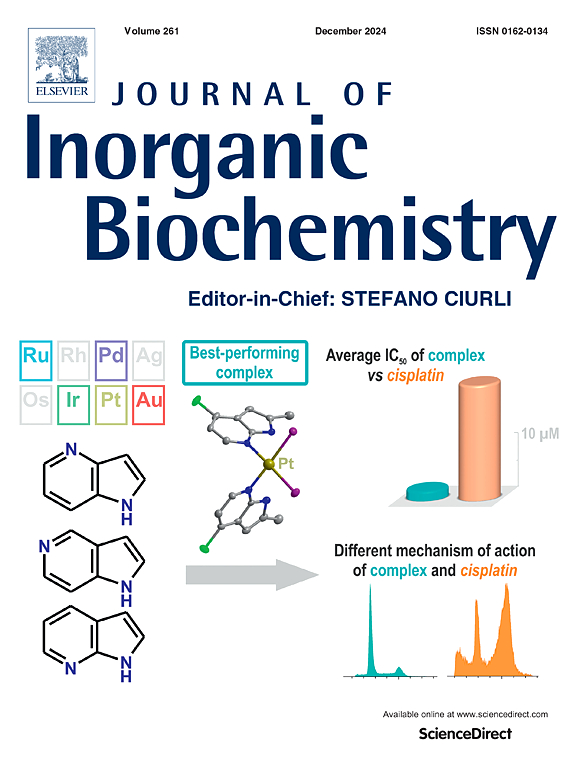基于质子耦合电子转移的仿生氧化催化:甲烷高效选择性氧化制甲醇的研究
IF 3.2
2区 化学
Q2 BIOCHEMISTRY & MOLECULAR BIOLOGY
引用次数: 0
摘要
本文从FeIII-TPA (TPA =三(2-吡啶基甲基)胺)配合物与烷基氢过氧化物氧化烷烃为ru -吡啶胺配合物开始,通过质子耦合电子转移氧化相应的rui -aqua配合物可转化为不同自旋态(S = 1或0)的ruii -氧配合物,阐明了这些自旋态不影响其在水中的反应性。引入强给体n -杂环羰基(NHC)基团,可以得到与ruiv -氧配合物反应性不同的ruiii -氧配合物。还描述了Ru-TPA配合物的第二配位球(scs)的操作,可视化独特的功能。将疏水SCS引入到fei - nhc配合物中,可以基于“捕获-释放”策略,在水介质中催化甲烷选择性氧化生成高选择性甲醇,这也可以使我们实现芳香族化合物的高选择性双电子氧化。本文章由计算机程序翻译,如有差异,请以英文原文为准。

Bio-inspired oxidation catalysis based on proton-coupled electron transfer: Toward efficient and selective oxidation of methane to methanol
In this paper, a trail of my research is described starting from oxidation of alkanes by FeIII-TPA (TPA = tris(2-pyridylmethyl)amine) complexes with alkyl hydroperoxides to Ru-pyridylamine complexes which can be converted to RuIV-oxo complexes in different spin states (S = 1 or 0) through proton-coupled electron-transfer oxidation of the corresponding RuII-aqua complexes, clarifying that those spin states do not affect the reactivity in water. The introduction of strongly donating N-heterocyclic carbene (NHC) moiety allows us to create a RuIII-oxyl complex showing different reactivity from that of RuIV-oxo complexes. Manipulation of second coordination spheres (SCSs) of Ru-TPA complexes is also described, visualizing unique functionality. The introduction of hydrophobic SCS to a FeII-NHC complex enables to catalyze selective oxidation of methane to form methanol in high selectivity in aqueous media based on the “catch-and-release” strategy, which can also allow us to achieve highly selective two-electron oxidation of aromatic compounds.
求助全文
通过发布文献求助,成功后即可免费获取论文全文。
去求助
来源期刊

Journal of Inorganic Biochemistry
生物-生化与分子生物学
CiteScore
7.00
自引率
10.30%
发文量
336
审稿时长
41 days
期刊介绍:
The Journal of Inorganic Biochemistry is an established international forum for research in all aspects of Biological Inorganic Chemistry. Original papers of a high scientific level are published in the form of Articles (full length papers), Short Communications, Focused Reviews and Bioinorganic Methods. Topics include: the chemistry, structure and function of metalloenzymes; the interaction of inorganic ions and molecules with proteins and nucleic acids; the synthesis and properties of coordination complexes of biological interest including both structural and functional model systems; the function of metal- containing systems in the regulation of gene expression; the role of metals in medicine; the application of spectroscopic methods to determine the structure of metallobiomolecules; the preparation and characterization of metal-based biomaterials; and related systems. The emphasis of the Journal is on the structure and mechanism of action of metallobiomolecules.
 求助内容:
求助内容: 应助结果提醒方式:
应助结果提醒方式:


